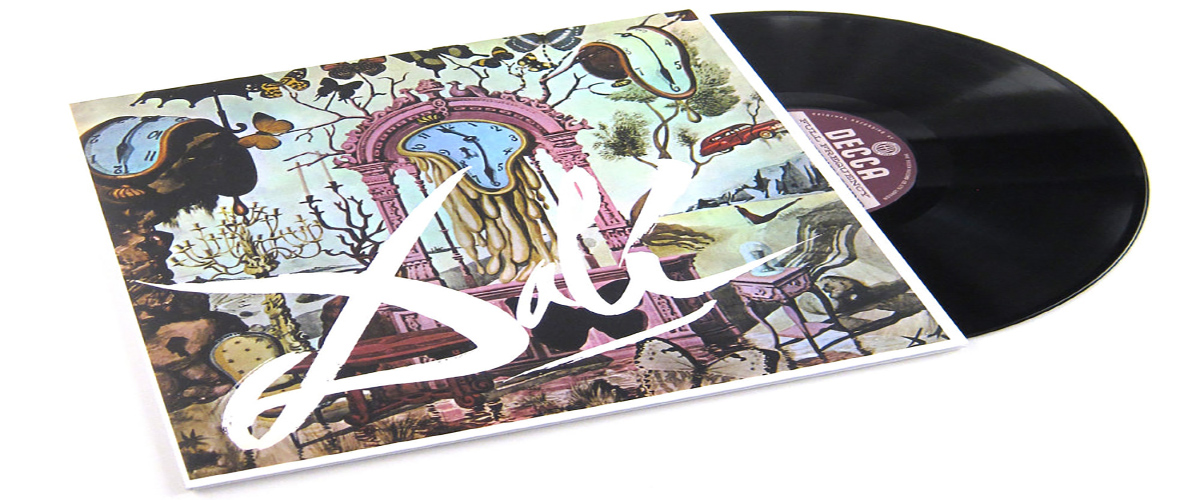Curated by Shaina Harkness
Dalí was a master of many mediums – oil, watercolor, sculpture, film, fashion, and yes, even music and record album covers! In this online exhibition we will introduce some of Dali’s most iconic contributions to the music industry, including album cover illustrations, opera, advertisements on record albums, recorded Dalí interviews on matters such as linguistics, sports, death and much more. Though not a complete discography, this exhibition will invite you to explore some of Dalí’s ventures into the music world.
At this link you can explore sound clips and more information from some of the albums below.
Lonesome Echo, 1955
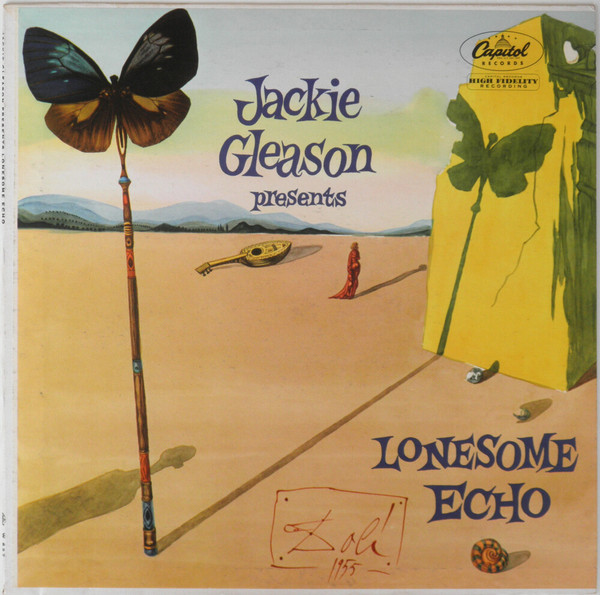
Though known mostly for his film and television roles such as in The Honeymooners and The Hustler, Jackie Gleason also had a long and prolific music career. He specialized in orchestral arrangements, producing jazz, mood music, and other instrumental pieces. He took pride in music that doesn’t draw attention to itself and blends into the background. Dalí’s cover art is as subdued and mellow as the music, and contains symbols from his iconography, like the butterfly.
Speaking of surrealists, the album art above is by perhaps the most famous one of all: Salvador Dalí. Jackie Gleason and Dalí were friends, and of their nights on the town together, the artist said: “Like Cinderella, when I was out with him [Gleason], I always tried to be home by midnight, because I couldn’t keep up with his nonstop pace.” On the sleeve of the album Dalí describes the artwork in his own words, saying: “The first effect is that of anguish, of space, and of solitude. Secondly, the fragility of the wings of a butterfly, projecting long shadows of the late afternoon, reverberates in the landscape like an echo. The feminine element, distant and isolated, forms a perfect triangle with the musical instrument and it’s other echo, the shell.” (from Outlet)
Rock n’ Roll, c.1958
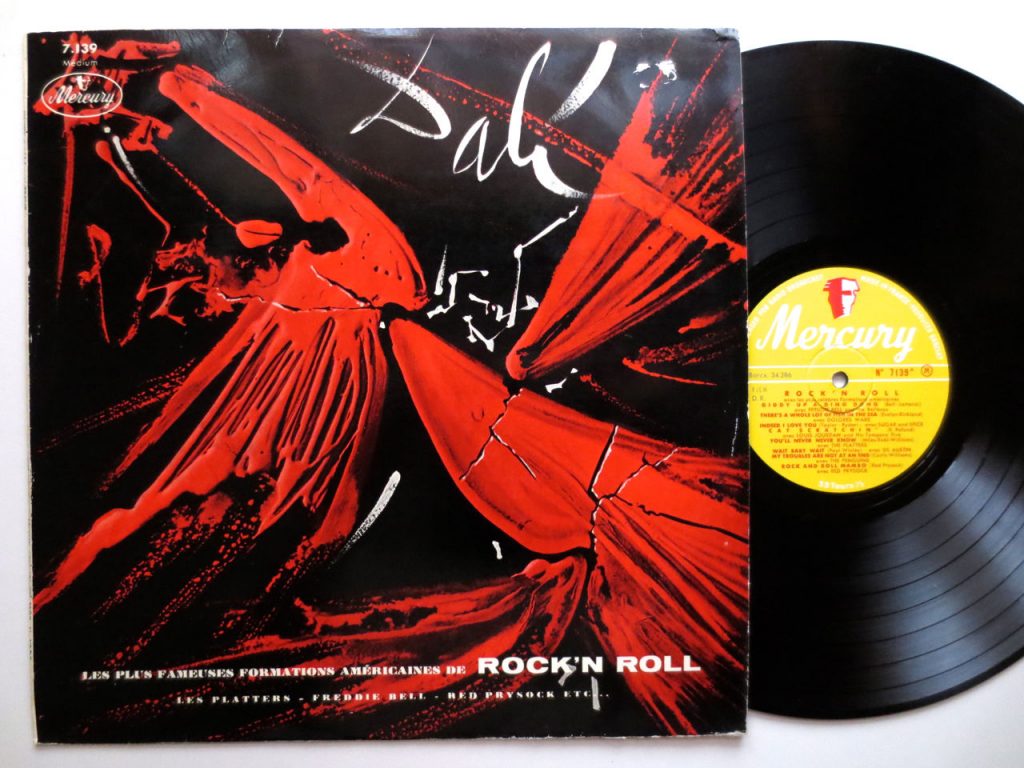
This album was released in connection with Dalí’s own perfume line also called ROCK ‘N ROLL, created in 1957. The elaborate perfume packaging, the promotional posters, and this album cover all use this distinct red, black & white painting, presumably created specifically for this release & the connected promotions.
ECHO Magazine: Dalinguistics, 1960
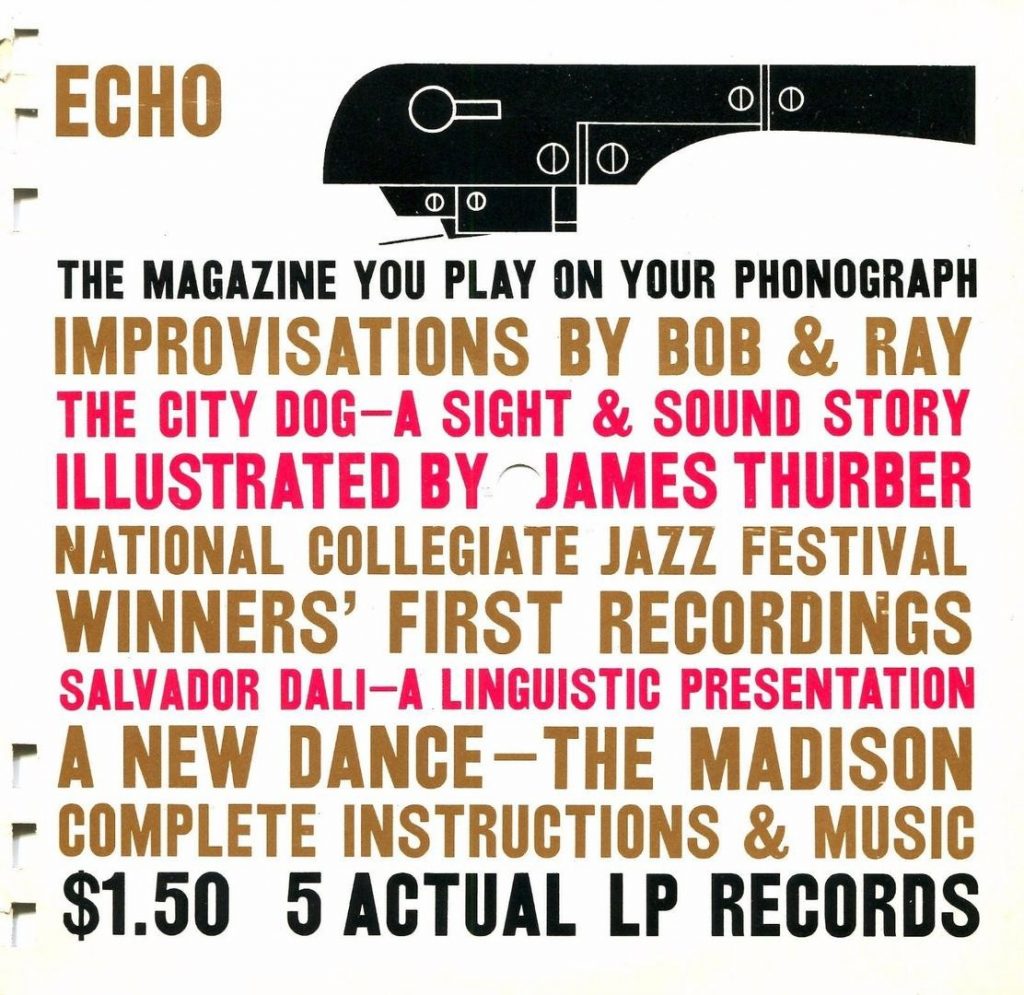
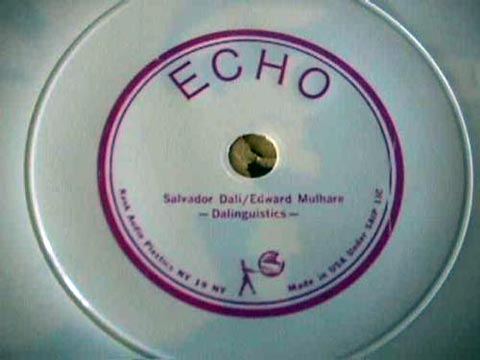
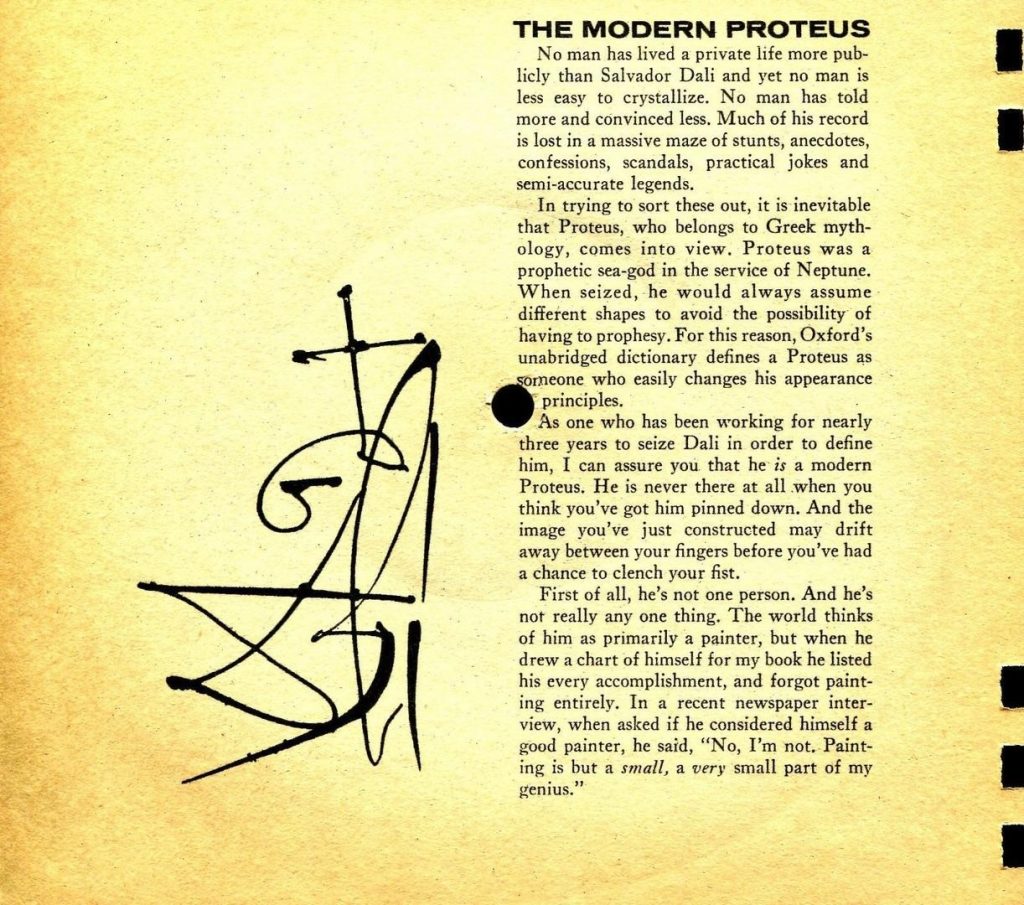
This album is a hilarious discussion between Salvador Dalí and Edward Mulhare (who was touring at the time replacing Rex Harrisson as Henry Higgins in the play My Fair Lady) where Dalí suggests a new way of intuitively articulating familiar words to make them more interesting. “Mr. Dalí urges that after this initial exposure to Dalinguistics Echo listeners will, with words of their own choosing, employ his methods to strengthen their communicating power.”
Strauss: Don Quixote, c.1960
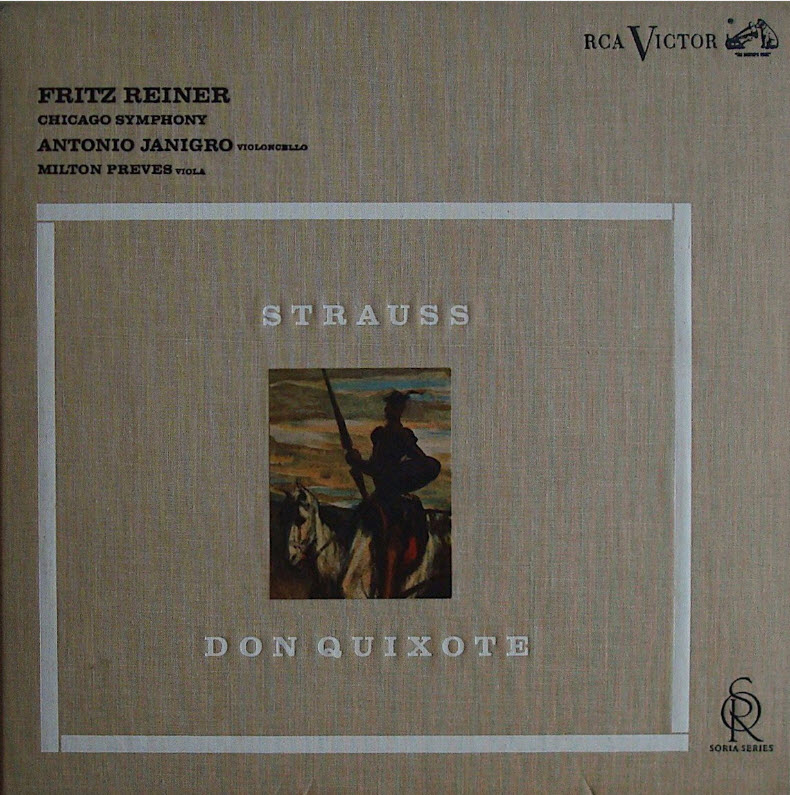
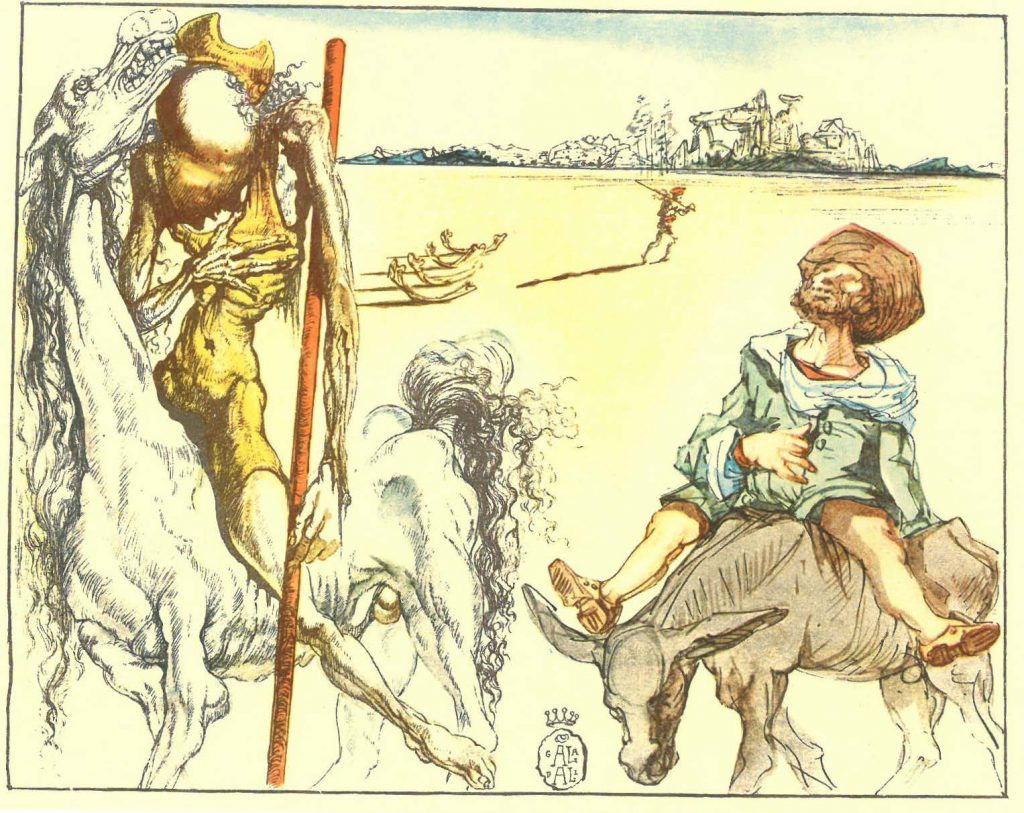
Don Quixote, Op. 35 is a tone poem by Richard Strauss for cello, viola, and orchestra. Subtitled Phantastische Variationen über ein Thema ritterlichen Charakters (Fantastic Variations on a Theme of Knightly Character), the work is based on the novel Don Quixote de la Mancha by Miguel de Cervantes. Strauss composed this work in Munich in 1897.
“Don Quixote, written by Miguel de Cervantes, is considered to be Spain’s most import[ant] work of literature and the first truly modern novel. The story takes place in sixteenth – century Spain and details the exploits of the self-proclaimed knight Don Quixote of La Mancha and his faithful squire Sancho Panza.” – description from Dalí By The Book exhibition file, 1996) Dali’s interest in this book was most likely due to “the personality of Don Quixote,” (Don Quixote de la Mancha; Ilustrado Por Salvador Dalí, p. 78). “Don Quixote and his madness, his true monomania, inspired the finest Dalí and thereby opened the door for him to apply his paranoiac-critical method (as he christened it), a spontaneous method of irrational knowledge based on the power of the systematic association inherent to paranoia, or, in other words, on the interpretative-critical association of delirious phenomena…” (Don Quixote de la Mancha; Ilustrado Por Salvador Dalí, p. 78).
It is no surprise that this 1960 album featured one of Dalí’s watercolors from the 1946 Random House publication. (See more about this publication here) This album also featured art work from artists such as Francisco Goya, Gustave Doré, Pablo Picasso, and Robert Osborn*
The Spanish Lady & The Roman Cavalier / Dalí In Venice, 1962
Opera/Ballet
La dama spagnola e il cavalieri romano was an opera produced by Lorenzo Alvary based off of Scarlotti’s 1714 composition Scippone nelle Spagne. La dama… was a comic scene within the original 1714 composition. Alvary’s goal was to turn it into a Surrealist opera, thus, asking for Salvador Dalí’s artistic services for the backdrops and costumes, as seen on the front and back cover of this album. Alvary worked with musicologist and composer Confalonieri to supplement the opera music with ballet compositions in the style of Scarlatti. The first half of the production was an opera, and the second half was a ballet, entitled Gala. Dalí worked with Maurice Béjart for the ballet. Béjart was the ballet choreographer who performed the dance portion of the spectacular event with prima ballerina Tcherina. It was staged in Venice, Italy in August 1961 at the Teatro la Fenice.
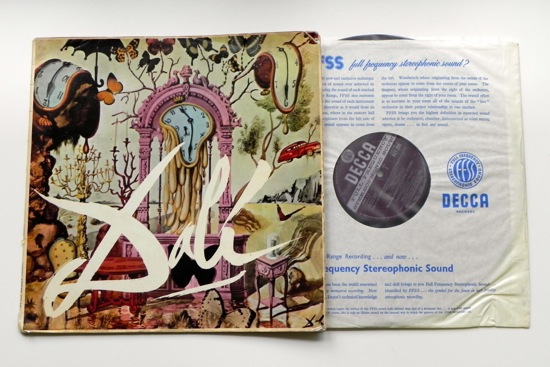
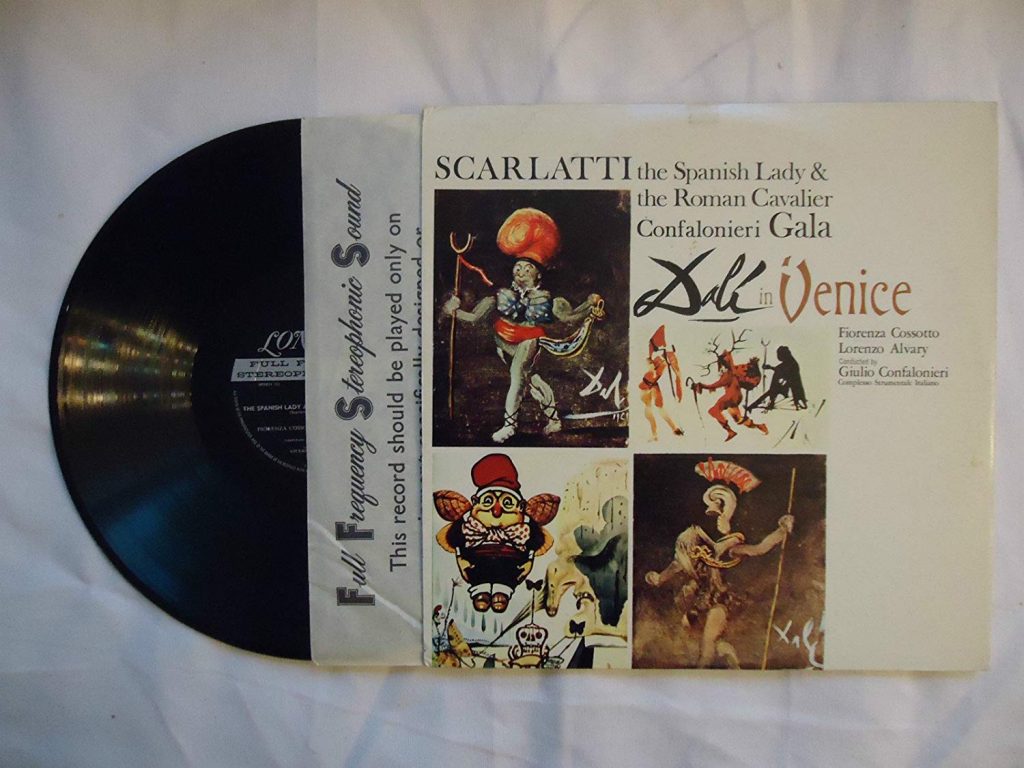
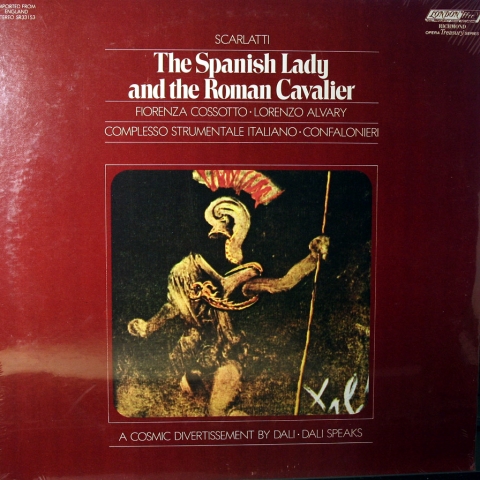
In Venice, August 1961, the most prominent surrealist artist of all time, Salvador Dalí staged a very unique performance at the Teatro La Fenice.
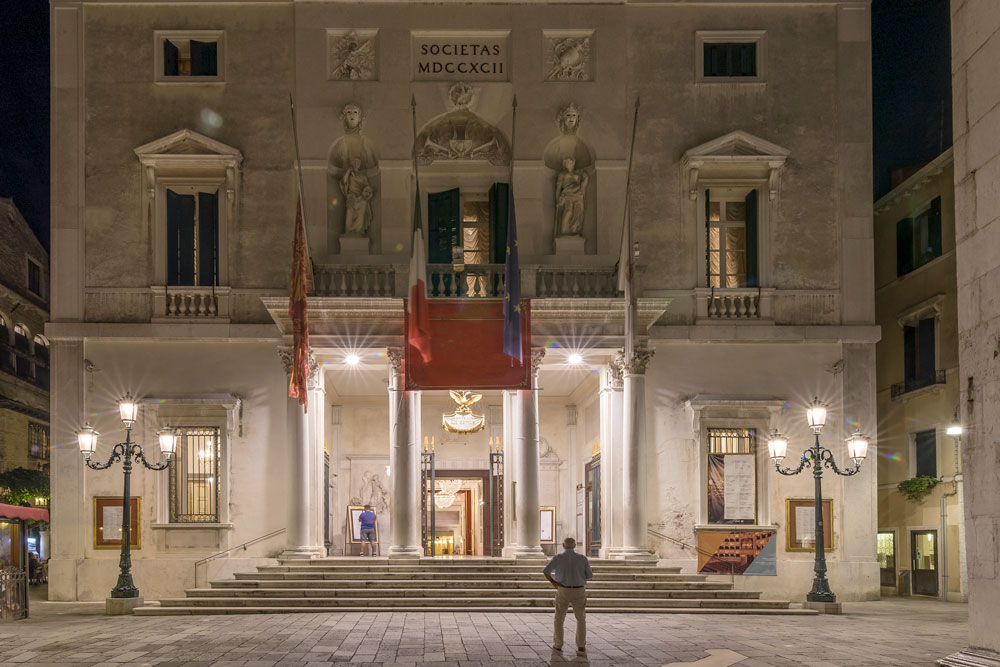
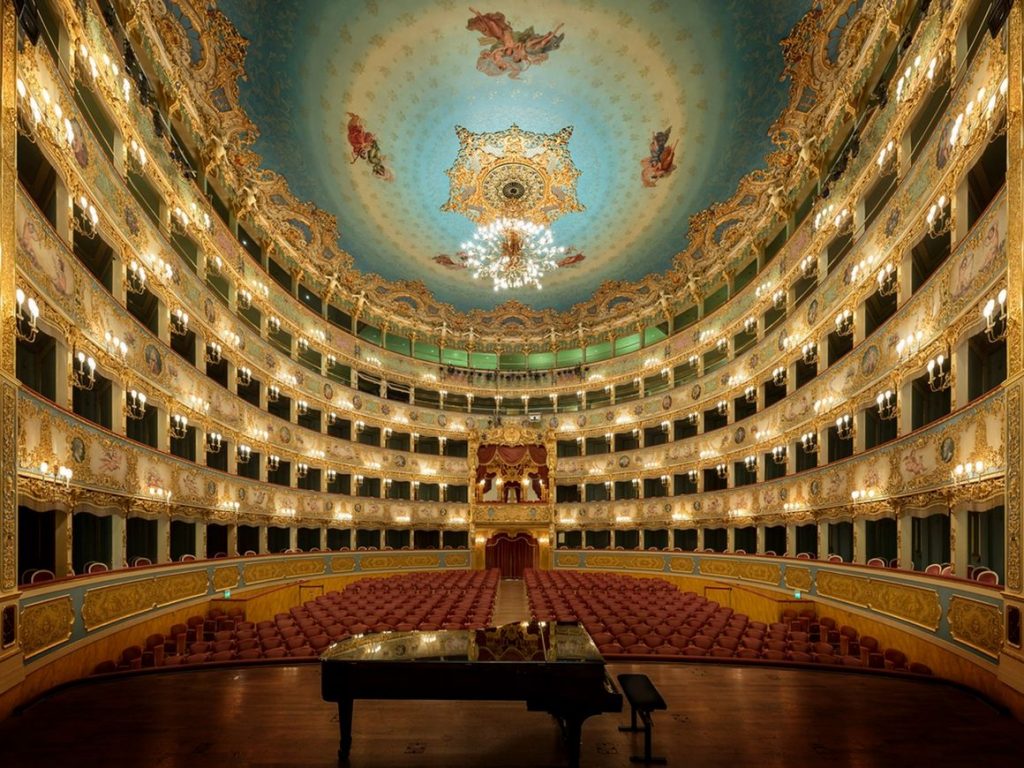
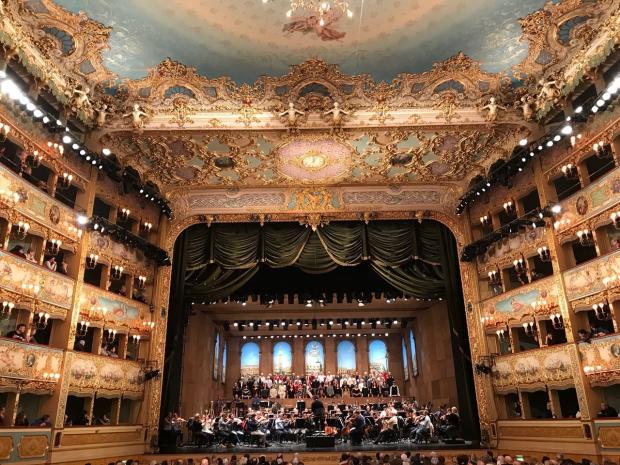
Dalí created many backdrops for the opera/ballet and below is one with Dalí’s iconic elephants, now located in the collection of the Indiana Museum of Art.
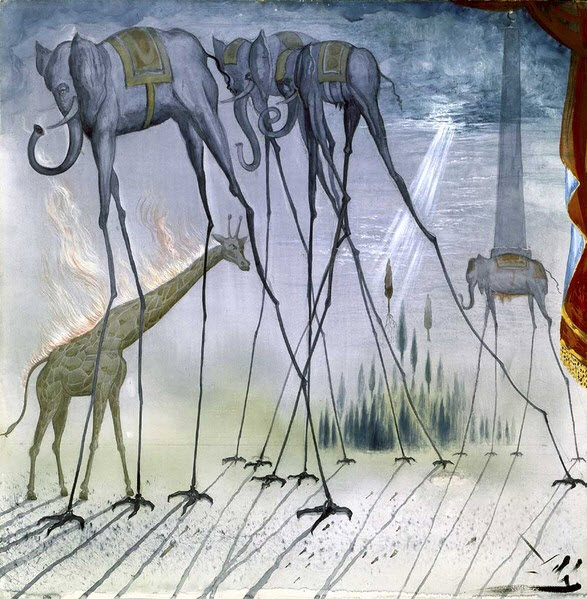
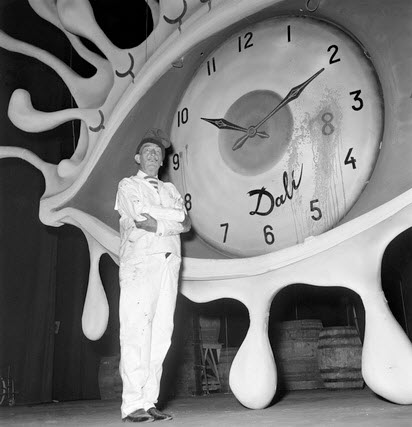
Here you can view an article from 1961 about the production of La dama spagnola e il cavalieri romano.
Paco Ibanez Poems de Federico Garcia Lorca, 1964-65
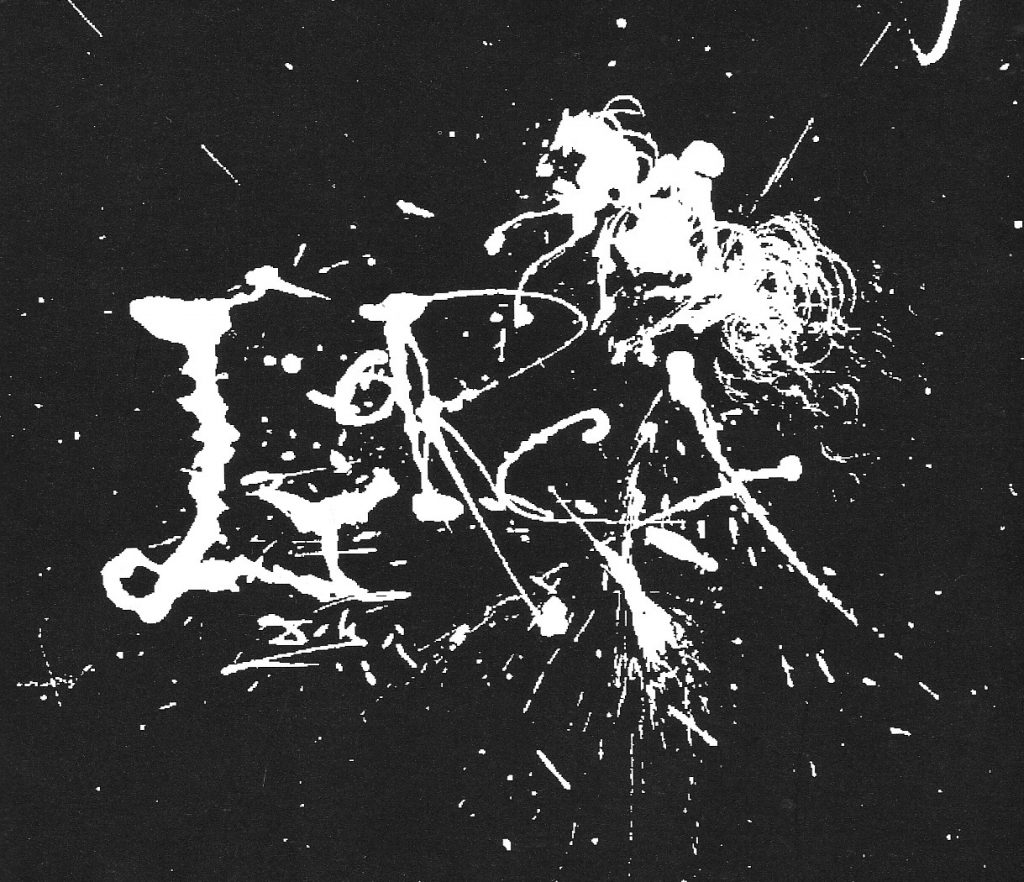
At the San Fernando Royal Academy of Fine Arts, the most prestigious art institution in Spain, in the Residencia des Estudiantes, Dalí meets Federico García Lorca, soon to become Spain’s greatest poet. There, Dalí became the friend of Lorca, Luis Buñuel (soon to become a remarkable filmmaker), and many others. Their relationship was a complicated one. In September 1928, Dalí wrote a scathing letter criticizing Lorca’s recently published Romancero Gitano (Gypsy Ballads), attacking its folkloric side and Lorca’s return to old poetic traditions. This letter enabled Dalí to distance himself from his passionate friend. After this point, they would only meet once more, in the autumn of 1935, and shortly thereafter Lorca was killed anonymously by Flangalist guards and buried in an unmarked grave. (From The Dalí Museum Docent Instructor Manual, 2009)
Francisco Ibáñez Gorostidi, known as Paco Ibañez, was born in Valencia in 1934. After the Spanish Civil War his family was obliged to go into exile in France, where he studied guitar in Paris with Andrés Segovia. In 1964 he released his first album, entitled ‘Lorca y Góngora’, with a sleeve design by Salvador Dalí. He returned to Spain in 1967, where his songs were soon adopted as anthems against the dictatorship of Franco (From Spain is Culture).
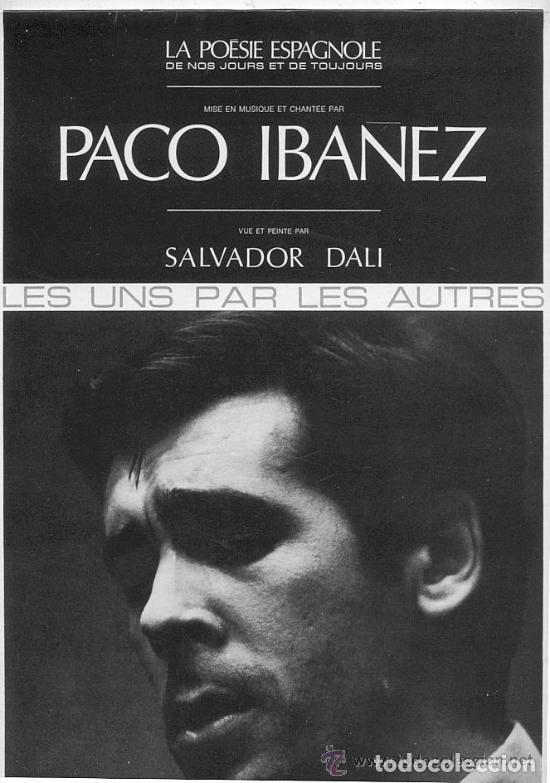
Esta es la Música de la Camisa Dalí, 1968
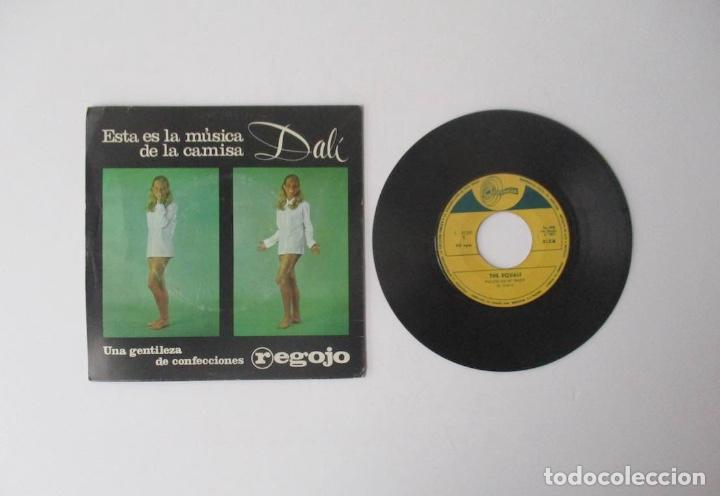
José Regojo was the head of Regojo garment label, a family business located in Spain specifically in Redondela, Catalonia. This album was a commercial for “…a garment made of cotton with polyester,” recalls Pedro Regojo, José’s son, the visible head of the business group. In the 70s, thanks to Dalí’s name and his backing, hundreds of thousands of these shirts were sold per year, and in really good years, millions were sold.
This was the first, and the only time that Dalí gave his image and name to a textile factory. Find more information about the Regojo textile empire and the Dalí shirts here.
L’Apothéose du Dollar racontée par Salvador Dalí, c.1971
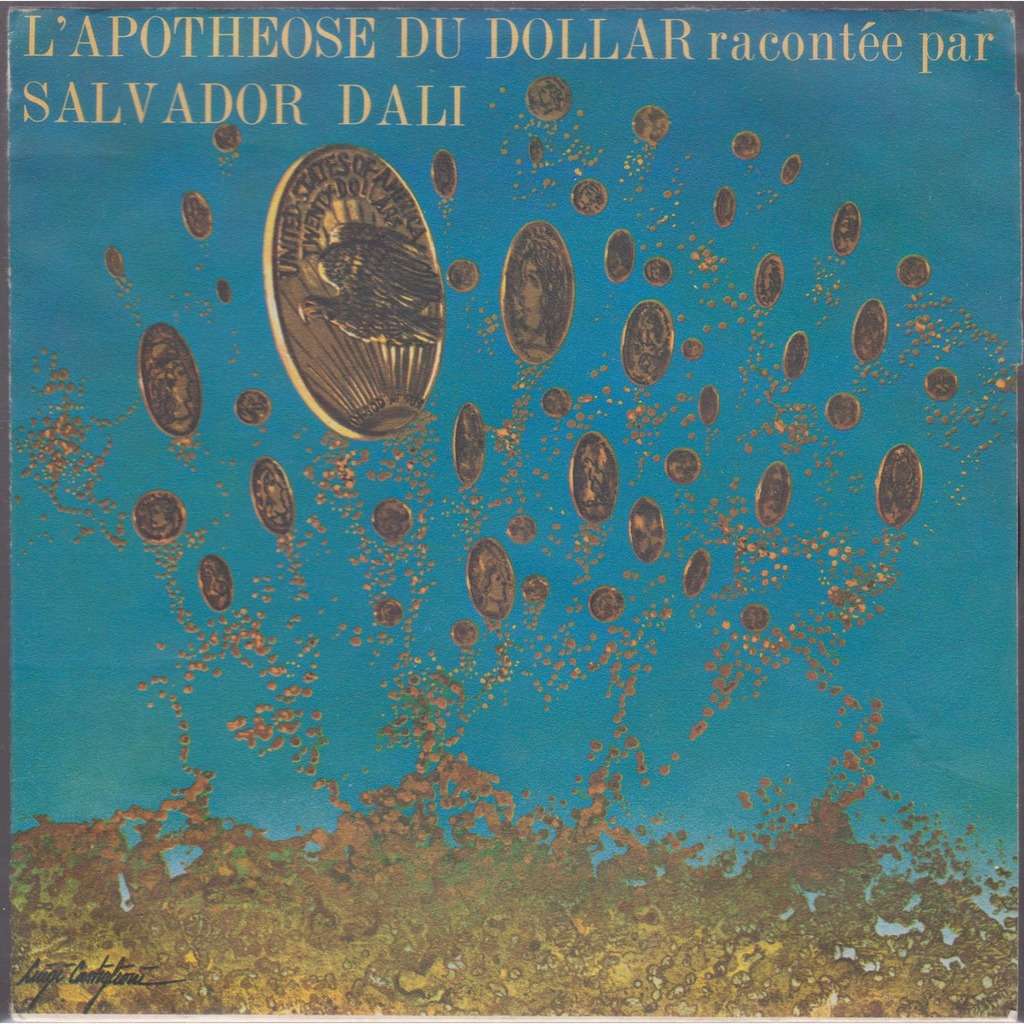
In 1942 in the first issue of VVV, André Breton wrote “Prolegomena to a Third Manifesto of Surrealism or Else,” where he writes the following referring to Dalí: “…or the picaresque imposture of that neo-falangist-night-table, Avida Dollars.” This is an anagram for “Salvador Dalí”, a phonetic rendering of the French phrase avide à dollars, meaning “eager for dollars.”
L’Apothéose du Dollar racontée par Salvador Dalí consists of a short commercial recorded by Salvador Dalí for Crédit Commercial de France (CCF). Below is the transcription of Dalí’s spoken part of which he mentions the nickname Avida Dollars given to him by Breton. What was meant to embarrass Dalí in fact, made “him relish in satisfaction of the rain of dollars around him”[translation by Shaina Harkness] :
Ici Salvador Dalí
Nommé par un anagramme par André Breton :
Avida dollars
Lequel anagramme avait été écrit avec une petite mauvaise intention
Croyant me gêner
Au contraire, c’était le mot magique
Qui a fait que depuis ce moment
Le dollar joue plus sur ma tête
Comme une inévitable divine diahrrée
Ce qui fait que depuis je m’endors chaque nuit
De plus en plus entouré de satisfaction
Parce qu’il y a rien au monde
Qui me procure autant de satisfaction
Que sentir cette pluie monotone et divine de dollars
Mais il y a un autre code qui amuse là tous les gens qui m’écoutent
C’est que justement, Auguste Comte, le grand philosophe français
Au moment d’inventer sa nouvelle religion positiviste
Il avait dit, avant de commencer cette religion
“Il faut que nous comptions avec les banquiers”
Oh ça c’est une chose un peu classique
Et qui prouve que sans banquiers il n’y a même pas de religion
Tout le moyen-âge a été basé sur la trans-mutation de la matière vile en or
Puisque l’unique façon de spiritualiser la matière
C’est de l’aurifier
Or, aussitôt que quelque chose devient de l’or
Devient de la puissance e-spirituelle
Dans un monde dans lequel il y a de plus en plus d’impuissance
Il faut vraiment l’or qui reconstitue cette barre de Jasé (???)
Qui va de la terre vile au ciel par la transmutation de l’or
Être Dieu, conceived in 1927 and recorded in 1974
Être Dieu (Being God), an opera-poem created by Salvador Dalí, was conceived in 1927 and recorded in 1974 at the Pathe Marconi Studios in Paris. The opera was released on CD in January 1994. Être Dieu features Dalí playing himself; it features him spluttering out his part in French with his own bizarre and inimitable pronunciation, sometimes lapsing into Catalan, into song, and into obscenity. The conception of the opera in 1927 was with Lorca and the theme is that Dalí is almost God, but not quite, since then he would not be Dalí, and that would not do. He insisted on improvising his part of the text saying, “Salvador Dalí never repeats himself.” (Curator Peter Tush) Dalí was aided in the opera’s execution by Barcelonan poet Manuel Vazquez Montalban, who wrote the libretto, and French composer Igor Wakhevitch, who wrote the music.
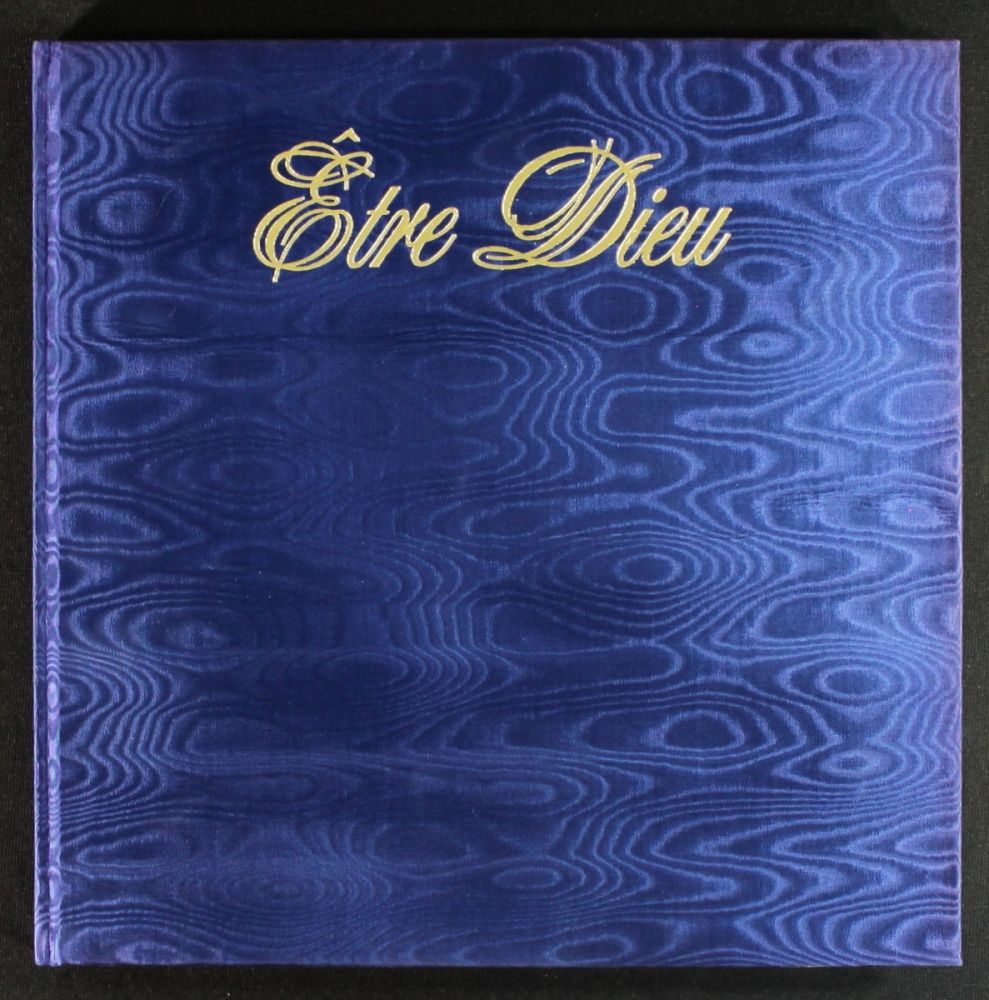
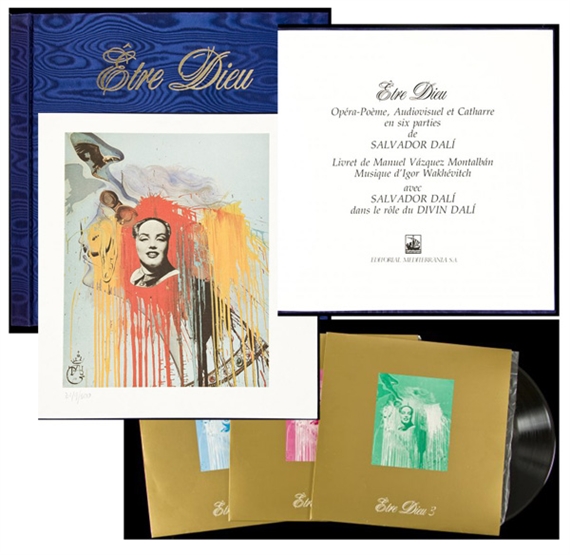
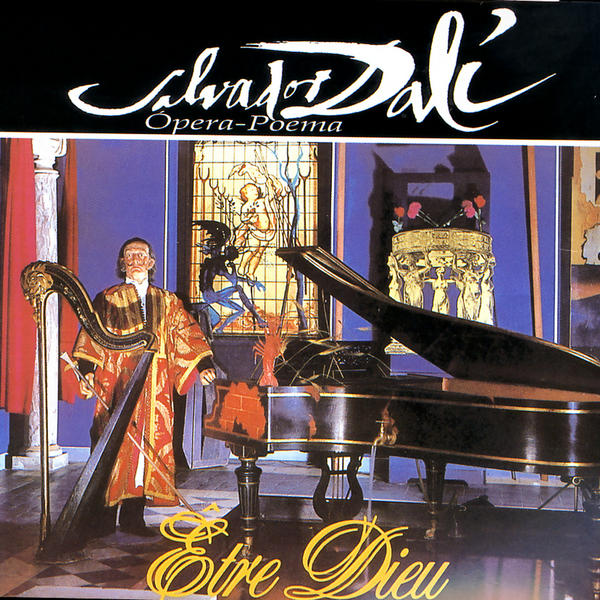
On November 5, 2005, Être Dieu was presented by Yugoslav musical producer Dragan Matic on La Rambla, Figueres, Spain.
Je Suis Fou de Dali, 1975
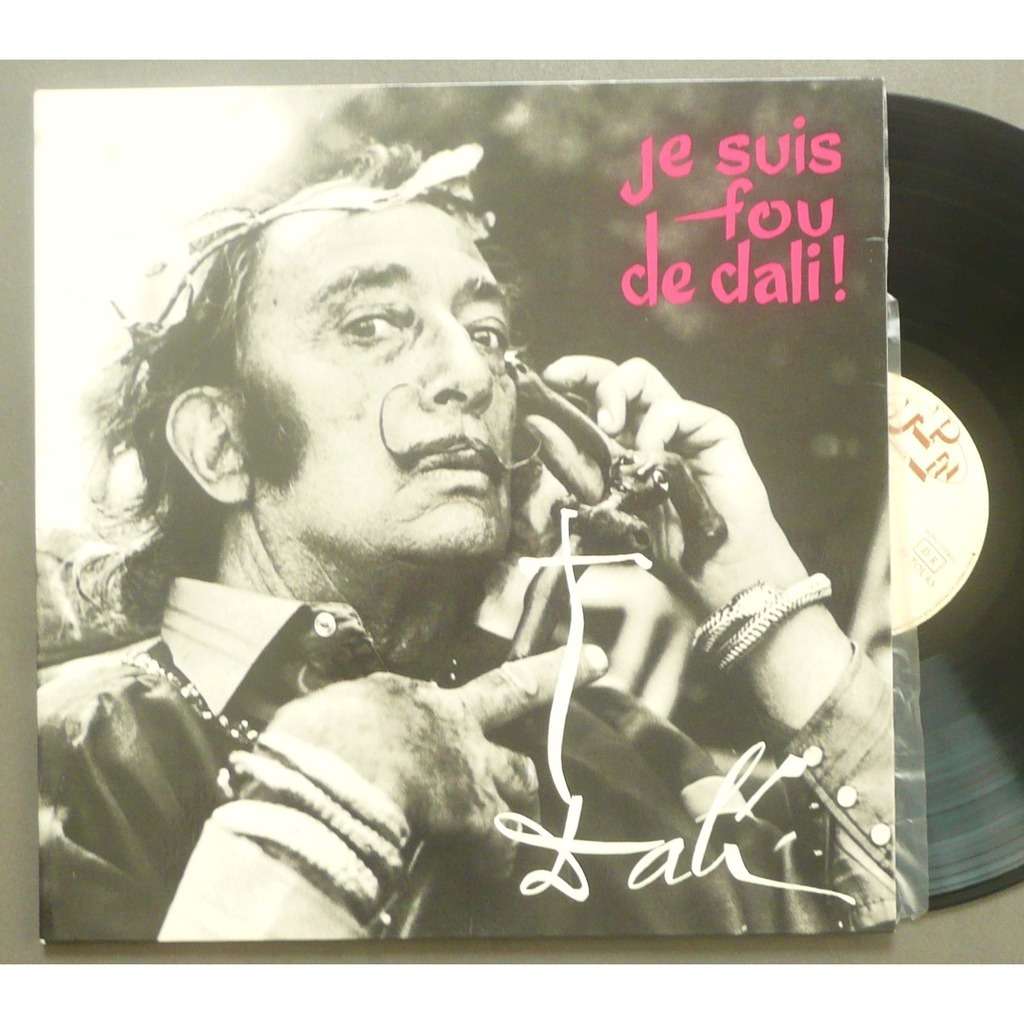
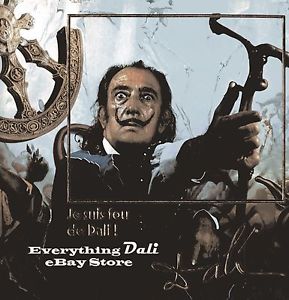
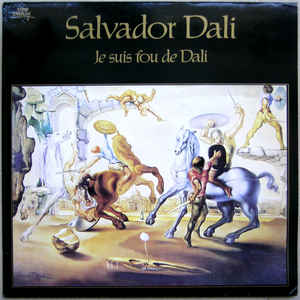
This album is a collection of excerpts from interviews with French journalists Deguelt François, Jean-Pierre Mottier and Simon Wajntrob. Topics include Les Anges (Angels), Le Sport (Sports), Dieu (God), Le Génie (Genius) and La Méthode Paranoaque-Critique (Paranoiac-Critical Method).
Usual Dalí-esque topics recur here and there: sexual impotence of all great artists ; self-proclaimed Catholicism as a means to shock the avantgarde ; scatology, including a warm eulogy of fartiste Joséph Pujol, after which Dalí mentions Benjamin Franklin as a dedicated farter ; Dalí’s own death and immortality is addressed during an exhilarating excerpt on Walt Disney’s (mythical) cryogenic freezing after his death in 1966, something Dalí wishes for himself as well. Quotations abound from great writers and mystics like Cervantes, Montaigne, Stendhal or San Juan de la Cruz.
